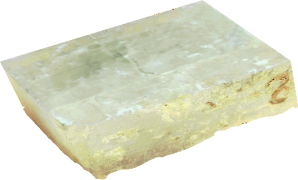
March Editorial
Navigation by crystal in medieval Iceland

March Editorial
Navigation by crystal in medieval Iceland
|
|
Early this year a small, whitish block of crystal was recovered from an Elizabethan-era ship which sank near Alderney in 1592. A joint research project between French and English groups showed that the stone was an Icelandic calcite (ref 1). The legend has it that Vikings used to be able to navigate by using these stones - so-called sunstones (from Icelandic: sólarsteinn). Sunstones were believed to allow the Vikings to pinpoint the direction of the sun even when the skies were overcast. |
|
|
Indeed the distinctive property of Iceland feldspar is that this form of calcite has the property of diffracting light into two separate rays. In 2011 a group of researchers led by Dr Ropers showed that it is possible to locate the position of the sun by using the Iceland feldspar even when it is cloudy or at twilight. As the researchers showed in their paper from March 2012 (ref 2) there are two ways of doing this. Method one is to move the stone across the visual field of the eye until a yellow entoptic pattern appears in the middle of the retina. (This middle part of the retina is called the fovea. It is responsible for creating the clear picture necessary for us to read, watch or drive). The other way to locate the sun is to put a dot on one side of the stone. When viewed from the other side, the depolarisation of the crystal will cause the stone to appear to have two dots. Once the crystal is rotated until the two points have the same luminosity, the top face will be angled in the direction of the sun. The authors of the most recent study believe that the calcite recovered from the Elizabethan shipwreck is indeed a sunstone which was used by the crew for navigation. And indeed the stone was found near a navigational instrument. But not everyone buys this theory. The evidence that the Vikings ever used feldspar as a navigation tool is sketchy and ‘sunstones’ have never been recovered from any Viking boats yet discovered. Secondly, the Elizabethan ship sank long after the Vikings were gone, and by then magnetic compasses had been known and used in Europe for 200 years. So why should the navigator on the ship use something so much less precise? But the leading author of the latest paper, Algert Le Floch, argues that one of the reasons why no sunstones have been found before is because calcite degrades quickly — it's vulnerable to acid, sea salts, and to heat. As to magnetic compasses - he says that although these were widely used in the 16th century, they often malfunctioned. So sunstones may have persisted as a less sophisticated but much more reliable back-up navigation tool. Journal Reference:
| |
| _______________________________ | ||||
| Home | | | Shopping | | | Database |
© Biscuit Software 2004-2015
All rights reserved